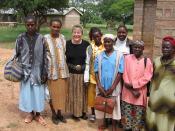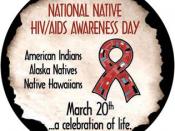The Hispanic population is the fastest growing minority in the United States, accounting for 13% of the population in 2000. The Hispanic culture has had the most influence of any other cultures in the past five years. Salsa music invaded radios and Spanish food sections have invaded grocery stores. It seems like Hispanics have a lot to be proud of when the statistics are lined up, but one statistic is always forgotten. In 2000, Hispanic adolescents (aged 13-19) accounted for 20% of the total number of new HIV/AIDS cases in the United States, officially making the race the fastest growing demographic.
In 1981, when HIV/AIDS first came to the public attention, mostly through the media, the national awareness level about HIV/AIDS was sky-high because the government realized that this was a fast growing epidemic needing immediate attention. Twenty-two years later, there are medicines that can prolong the life of a person living with HIV/AIDS.
Thus, cases of the disease are no longer covered in the news. Unfortunately, however, the age group most affected by the disease these day's falls between ages of 13 and 19. Therefore, they were not exposed to the barrage of information that was prevalent in the early 1980's. Worse, 8% of these Hispanic adolescents affected do not even speak or understand English - the language that most HIV/AIDS ads are presented in. Furthermore, many schools do not offer sexual education in their curriculum and since the Hispanic culture does not lend itself to discussing sexual matters with their children, information about this disease is not reaching this new demographic. Another reason why Hispanic adolescents are the group with the fast growing rates of HIV/AIDS is because although medicine is available, it is not affordable. These children need to know how HIV/AIDS is transmitted, prevention methods,


